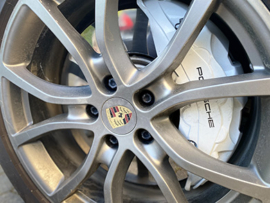This diagnostic trouble code is generated when the Engine Control Module (ECM) perceives that the EGR system is not allowing enough exhaust gases to flow back into the combustion chamber. The EGR system plays a pivotal role in reducing nitrogen oxide (NOx) emissions, which are harmful pollutants. By redirecting a portion of the exhaust gases back into the engine’s intake, the EGR system cools the combustion process and subsequently reduces the formation of NOx. When the system does not redirect enough exhaust gas due to blockages, malfunctions, or other issues, the ECM picks up the discrepancy, triggering the P0401 code.
More about the code
Several factors can lead to the onset of the P0401 code. These range from a clogged EGR passage, a malfunctioning EGR valve, to issues with the EGR solenoid or pressure sensors. When this code is set, drivers might notice a decrease in engine performance, increased fuel consumption, and a rough idle. Moreover, since the EGR system directly affects emissions, vehicles with this code may produce higher levels of NOx, making it challenging to pass emissions tests in regions with stringent environmental standards. Addressing the root cause of this code is essential, not just for optimizing vehicle performance and efficiency but also for ensuring environmental compliance.
Fixes for OBD-II Code P0401
It is worth noting, that these are general steps, the exact procedure and components involved might vary based on your vehicle’s make, model, and year. To address this issue, follow these general steps:
- Initial Diagnosis. Before diving deep, visually inspect the EGR system. Look for any obvious signs of damage, leaks, or disconnected components. Sometimes, the simplest oversights or deteriorations can cause this code.
- Check the EGR Valve. The EGR valve is responsible for regulating the flow of exhaust gases. If it’s malfunctioning or clogged, it can restrict flow. Remove the valve and inspect it for carbon buildup or damage. Clean it thoroughly using a suitable cleaner, or if it’s beyond cleaning or visibly damaged, replace it.
- Inspect EGR Passages. Over time, carbon deposits can accumulate in the EGR passages, limiting the flow of exhaust gases. Clean out these passages, ensuring they are free from obstructions.
- Evaluate EGR Vacuum Modulator (if applicable). Some vehicles employ a vacuum modulator to manage the EGR system. If this component fails or becomes clogged, it could impede the flow. Check its condition and replace if necessary.
- Examine the DPFE Sensor. Many vehicles utilize a Differential Pressure Feedback EGR (DPFE) sensor to monitor the EGR flow. If this sensor provides incorrect data, it might trigger the P0401 code. Test the sensor for proper functionality and replace it if it’s faulty.
- Verify Electrical Components. Ensure that all electrical connections within the EGR system, including sensors and solenoids, are secure and free from corrosion or damage.
- Test Drive & Monitor. After making any repairs or cleaning components, take the vehicle for a test drive. Monitor the system and use an OBD-II scanner to check if the P0401 code clears.
If you’ve addressed the common issues and the code persists, it might be wise to consult a professional mechanic.
How much does it cost to fix the code P0401?
A broad estimate for addressing a DTC P0401 can range from $100 on the low end (if it’s a simple cleaning or a single part replacement) to upwards of $700 or more on the high end (if multiple components need replacement, especially for high-end vehicles with pricier parts). The cost can vary widely based on several factors:
- EGR Valve Replacement. This is often the primary culprit when it comes to a P0401 code. The cost of a new EGR valve can range from $50 to $300 for the part itself, depending on the vehicle. Labor can add another $50 to $150, depending on the complexity of the job and regional labor rates.
- Cleaning the EGR Passages. If carbon deposits in the EGR passages are the issue, a thorough cleaning might be needed. The cost for this can range from $50 to $200, depending largely on labor costs.
- DPFE Sensor Replacement. If the Differential Pressure Feedback EGR (DPFE) sensor is faulty, a replacement might be necessary. The sensor itself can cost between $20 and $100, with labor adding another $40 to $100.
- EGR Vacuum Modulator or Solenoid Replacement. If your vehicle has one and it’s found to be faulty, expect to pay between $20 and $100 for the part and another $40 to $100 for labor.
- Diagnostic Fee. Many auto repair shops will charge a diagnostic fee to determine the exact cause of the problem. This can range from $50 to $120, though some shops will waive this fee if you choose them for the repair.
Can I continue driving with the P0401 code?
Quite often you can continue driving with the P0401 code in the short term, and the issue might not be as noticeable in daily driving situations. Along with this, it’s not recommended to drive the car. It worth to have the issue diagnosed and repaired as soon as possible. Ignoring it for an extended period could lead to further complications and additional repair costs.
What sensor controls the EGR valve?
The EGR (Exhaust Gas Recirculation) system’s operation is often monitored and controlled by several sensors, but the primary sensor responsible for controlling the EGR valve’s function is the EGR Position Sensor (sometimes called the EGR Valve Position Sensor or EVP). This sensor detects the actual position of the EGR valve, allowing the vehicle’s engine control module (ECM) or engine control unit (ECU) to determine how much the valve is open and, by extension, how much exhaust gas is being recirculated into the intake manifold.
In addition to the EGR position sensor, other sensors play supportive roles in the EGR system’s operation:
- DPFE Sensor (Differential Pressure Feedback EGR Sensor): Specific to many Ford vehicles, this sensor measures the difference in pressure before and after a restriction in the EGR tube to determine the flow of exhaust gases. The ECM/ECU uses this information to adjust the EGR valve’s position.
- EGR Temperature Sensor. This sensor measures the temperature of the recirculated exhaust gases. A significantly high temperature reading might indicate that the EGR valve is open and working correctly, while a reading closer to the ambient intake air temperature could suggest the valve is closed or malfunctioning.
- MAP (Manifold Absolute Pressure) Sensor. While not exclusive to the EGR system, the MAP sensor can indirectly help monitor the EGR’s operation. When the EGR valve is open and exhaust gases are being recirculated, there can be a change in manifold pressure. The ECM/ECU can use this information, among other inputs, to determine if the EGR system is functioning as intended.
To ensure the EGR system operates optimally, it’s crucial for these sensors to work correctly. Any malfunction in these sensors can lead to issues with the EGR valve operation.
How do I know if my EGR is blocked?
Here are several signs and methods to determine if your EGR system is blocked:
- Check Engine Light (MIL) Illuminated. The most common indicator of an EGR issue (whether it’s a blockage, malfunction, or other problems) is the illumination of the check engine light on your dashboard. Scanning the vehicle with an OBD-II scanner can provide specific diagnostic trouble codes (DTCs) related to the EGR system.
- Poor Performance. A blocked EGR can result in reduced engine performance. The engine might feel less responsive, lack power, or hesitate when accelerating.
- Increased Fuel Consumption. The EGR system helps improve fuel efficiency. If it’s blocked, you might notice a decrease in miles per gallon.
- Pinging or Knocking. The EGR system helps prevent engine knocking by recirculating some exhaust gases back into the combustion chamber, thereby reducing peak temperatures. A blocked EGR can result in noticeable pinging or knocking sounds, especially under load or acceleration.
- Rough Idle. If the EGR is blocked, you might experience a rough or unstable idle, as the engine might struggle to maintain a consistent RPM.
- Visual Inspection. Sometimes, by removing and inspecting the EGR valve and its passages, you can visually identify blockages. Over time, carbon deposits can accumulate and obstruct the flow of exhaust gases.
- Vacuum Test. On vehicles where the EGR valve is operated by vacuum, you can use a handheld vacuum pump to apply vacuum to the EGR valve when the engine is running. If the engine idle changes or the engine stalls, the EGR is likely functioning. If there’s no change, it could be an indication of a blockage or a malfunctioning valve.
- Stall Test. This is another method for vacuum-operated EGR systems. With the engine idling, manually open the EGR valve by pushing on the diaphragm or using a tool. If the EGR system is functioning correctly, this should cause the engine to either stall or run very roughly.
We do an efforts to find, research and recommend the best products. So, we may receive commissions from purchases that you make after following the links in our product reviews.








Leave A Comment